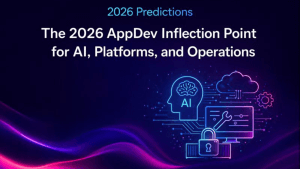Cloud spending is projected to hit $1.35 trillion by 2027, yet a staggering 30% of that investment will be wasted without more effective financial operations (FinOps) practices in place. As organizations scale their cloud adoption, the urgency to bring structure, visibility, and efficiency to cloud governance is more pressing than ever.
In my recent conversation with Tatum Tummins, Senior Product Manager at Kion and former FinOps practitioner in the healthcare space, we explored the evolution of FinOps, the critical role of CloudOps (often referred to as DevOps), and why the future of cloud governance hinges on these two disciplines working in tandem. What emerged was a clear picture: organizations must shift from reactive cloud cost cleanup to proactive, automated governance rooted in collaboration.
Convergence of FinOps and CloudOps
FinOps is often misunderstood as just another cost-reduction tactic. In reality, it’s a cultural practice aimed at maximizing the business value of cloud through cross-functional collaboration. The FinOps journey follows a continuous cycle of:
- Inform – Achieving visibility into cloud usage and spend.
- Optimize – Identifying cost-saving opportunities.
- Operate – Implementing sustainable, repeatable processes for long-term efficiency.
It’s in this “operate” phase where the real challenge—and opportunity—lies. Enter CloudOps.
CloudOps, while defined differently across organizations, typically includes the teams responsible for cloud infrastructure management, security, automation, and access control. Tatum rightly pointed out that these teams are uniquely positioned to embed governance at the infrastructure level before costs spiral out of control.
The combination of FinOps and CloudOps allows organizations to approach cloud governance with a unified mindset, where cost, performance, and compliance are managed holistically.
Why Reactive Governance Isn’t Enough
Our research shows that only 22% of enterprises have fully integrated FinOps into their cloud operations. Meanwhile, 73% of IT leaders struggle to align cloud budgets with business priorities. The result? Missed opportunities, budget overruns, and wasted infrastructure.
Tatum shared a real-world example: during an AI initiative, a customer’s previous organization provisioned a cloud account without tagging, budget controls, or access restrictions. The result? A $50,000 surprise cloud bill, and a 48-hour investigation to track down the cause. It’s a familiar story in today’s cloud-first world—and a clear argument for proactive governance.
Instead of reacting to spend anomalies after they occur, forward-thinking organizations are now automating governance upfront. This includes:
- Enforcing least privilege access
- Applying tagging policies automatically
- Setting financial guardrails like daily spend limits or regional restrictions
These aren’t just technical best practices, they’re business imperatives.
Guardrails, Automation, and the Governance by Default Model
The future of FinOps lies in governance by default. This means building cloud environments where visibility, control, and automation are embedded from day one.
Here’s what that model looks like:
- Visibility: Unified dashboards showing cost, compliance, identity, and access all in one place.
- Guardrails: Pre-configured policies for security, spending, and usage applied during provisioning.
- Automation: Lifecycle policies (e.g., turning off dev environments at night, auto-deleting unused volumes) that reduce waste without human intervention.
- Security and Access Control: Least privilege by design, reducing the risk of unauthorized actions that could lead to costly mistakes.
One customer Tatum referenced grew from $10M to over $200M in cloud spend while reducing provisioning time by 10x all by embracing proactive automation and integrated governance. It’s a powerful example of what’s possible when FinOps and CloudOps teams collaborate.
FinOps for AI, AI for FinOps
Looking ahead, the rise of generative AI is adding a new dimension to cloud spend and cloud governance. Tatum described two sides of the AI coin:
- FinOps for AI: Controlling and managing the explosive costs of AI infrastructure (e.g., GPUs, data pipelines).
- AI for FinOps: Leveraging AI to make cost predictions, optimize workloads, and flag anomalies in real time.
Both will be essential as organizations mature their FinOps practices. In either case, automation will be the connective tissue to enable smarter decisions, faster remediation, and scalable governance.
Next Up is Unified Cloud Governance
At theCUBE Research, we’re seeing a growing shift toward integrated platforms for FinOps and CloudOps. In fact, 75% of respondents in a recent survey reported using 6–15 tools for monitoring and governance; and a majority of those expressed a desire to consolidate.
Looking past 2025, we believe enterprises will prioritize:
- Embedding FinOps within CloudOps and DevOps workflows
- Consolidating tools into unified governance platforms
- Investing in proactive automation to manage cost, compliance, and security
- Measuring success by value creation, not just cost reduction
Start with Shared Responsibility
If there’s one key takeaway, it’s this: FinOps is not just about saving money; it’s about building a sustainable, scalable, and secure cloud foundation that empowers innovation without sacrificing control.
Tatum put it perfectly, “FinOps teams bring the financial oversight, CloudOps teams bring the technical know-how. When these teams collaborate, organizations can move faster with less risk and greater impact.”
For those looking to get started or level up their cloud governance maturity, I recommend exploring the FinOps Foundation’s growing body of resources. And more importantly, start the conversation internally between finance, engineering, security, and operations. That’s where true governance begins.



